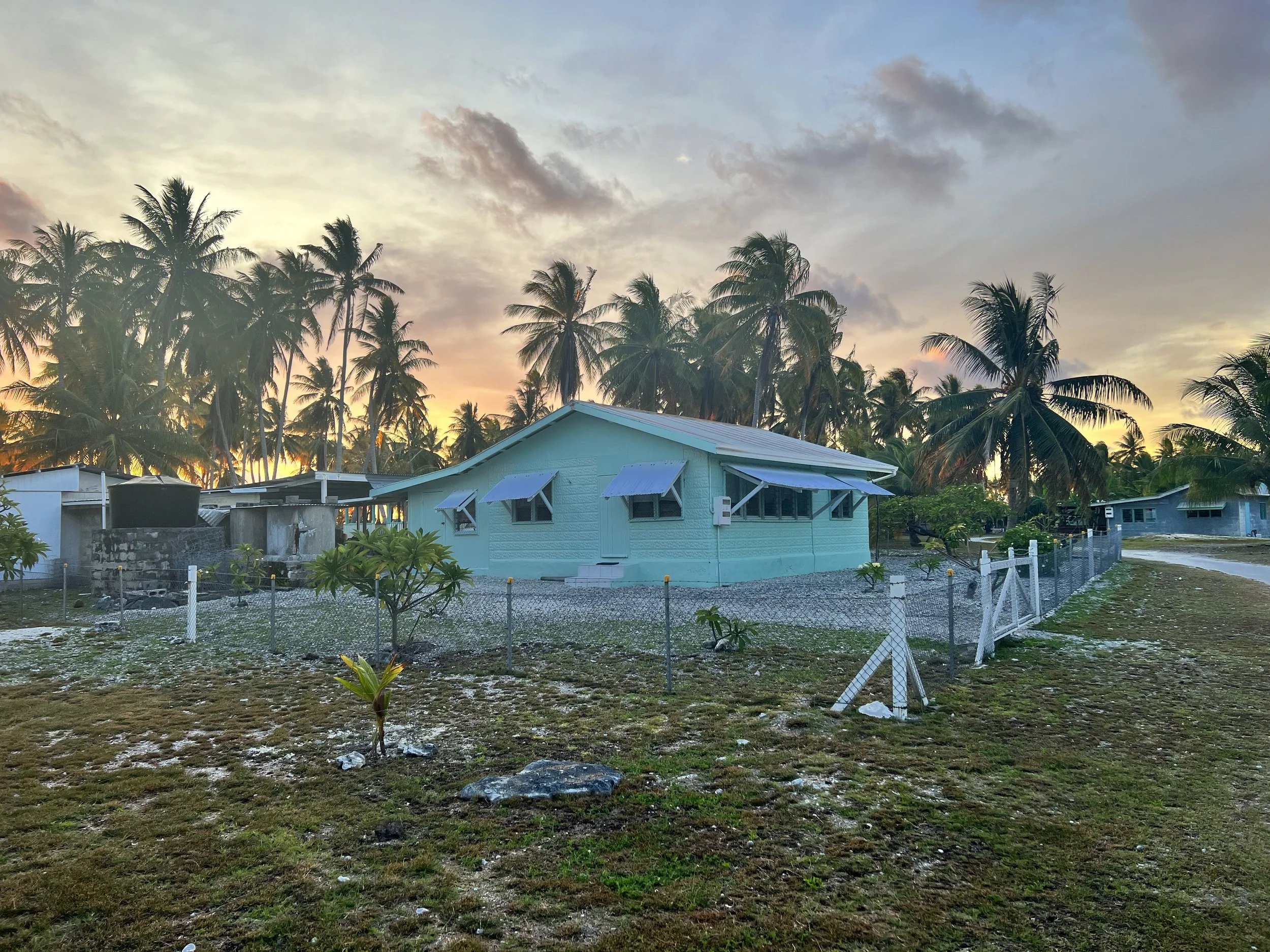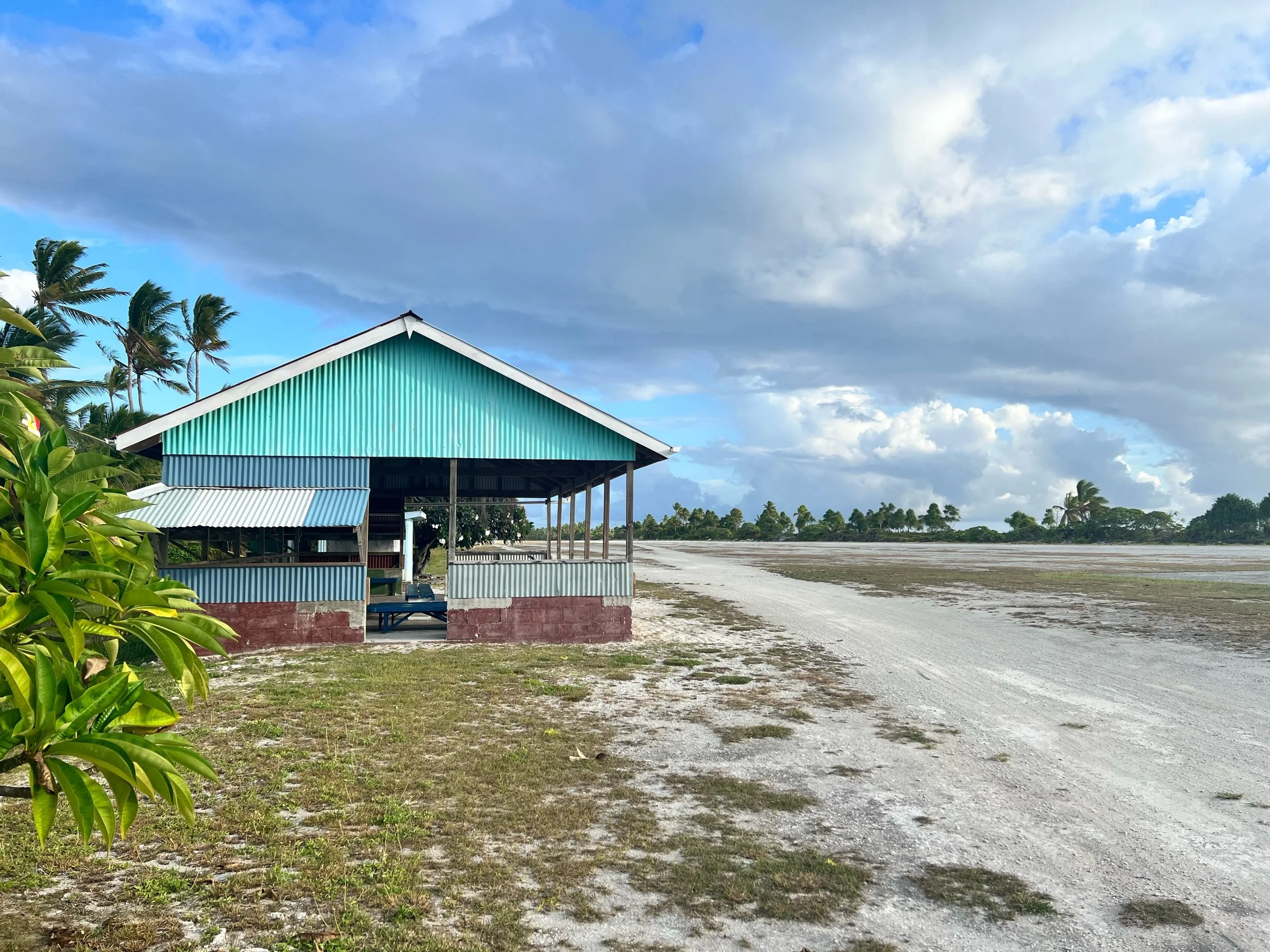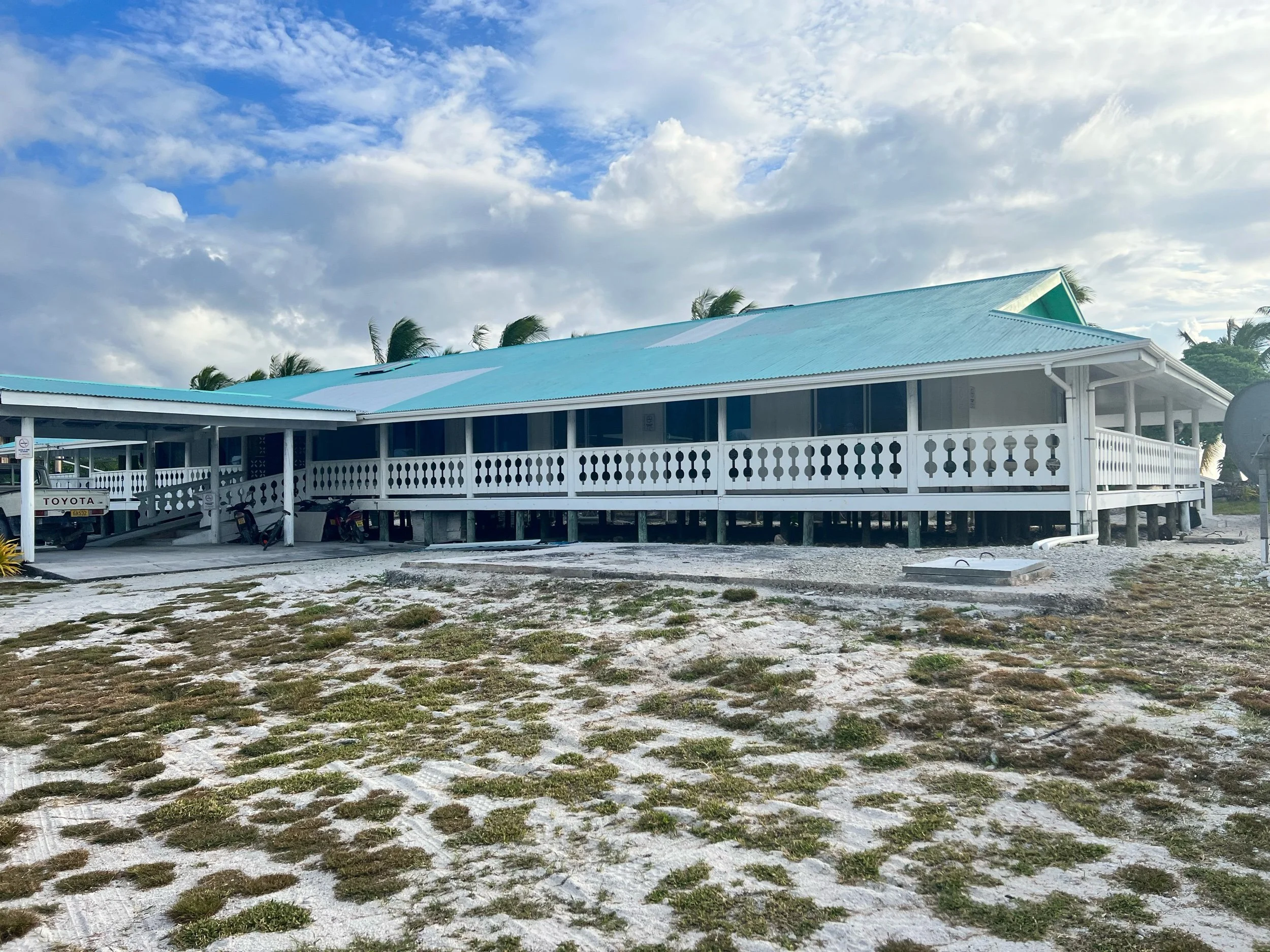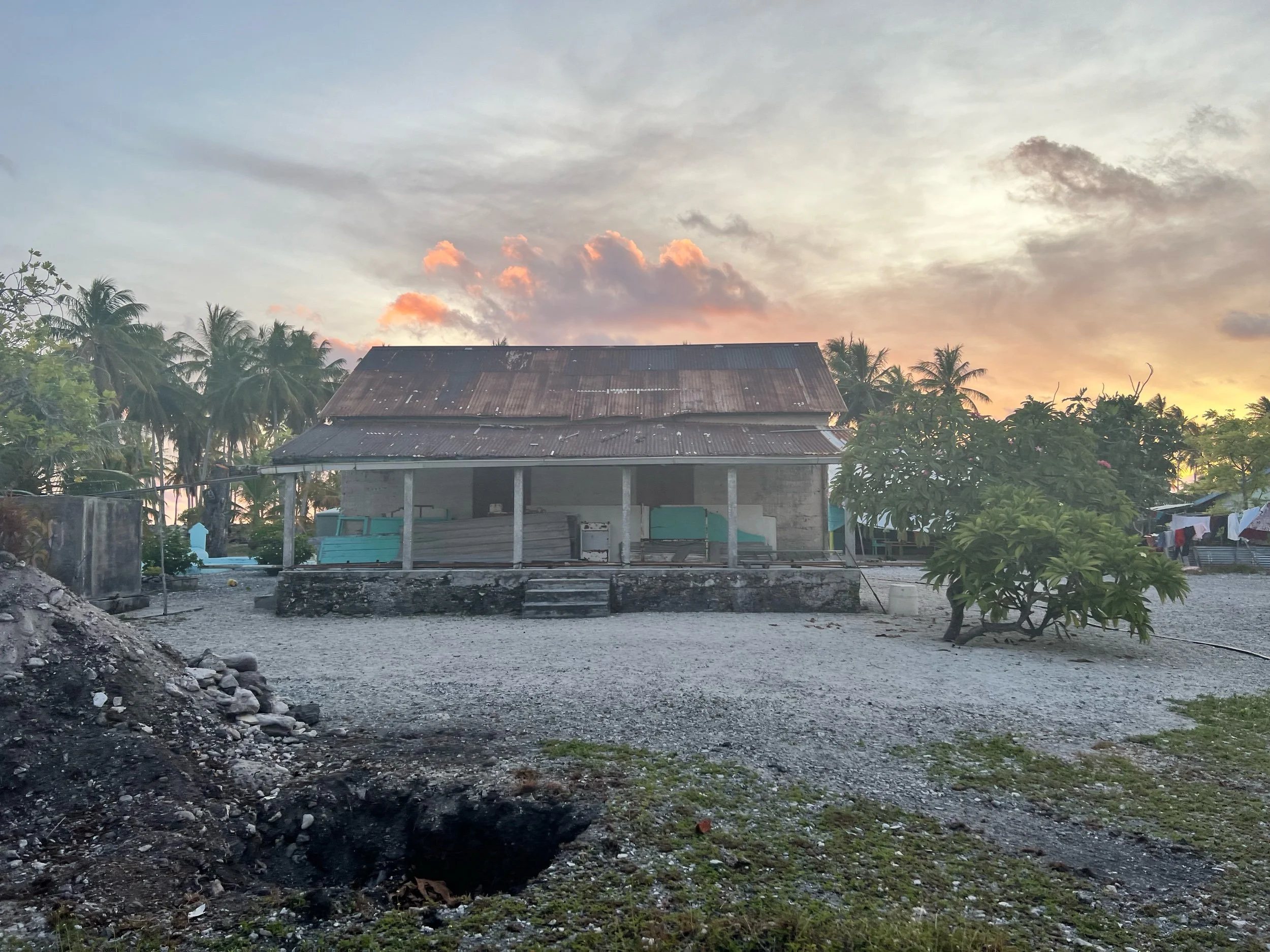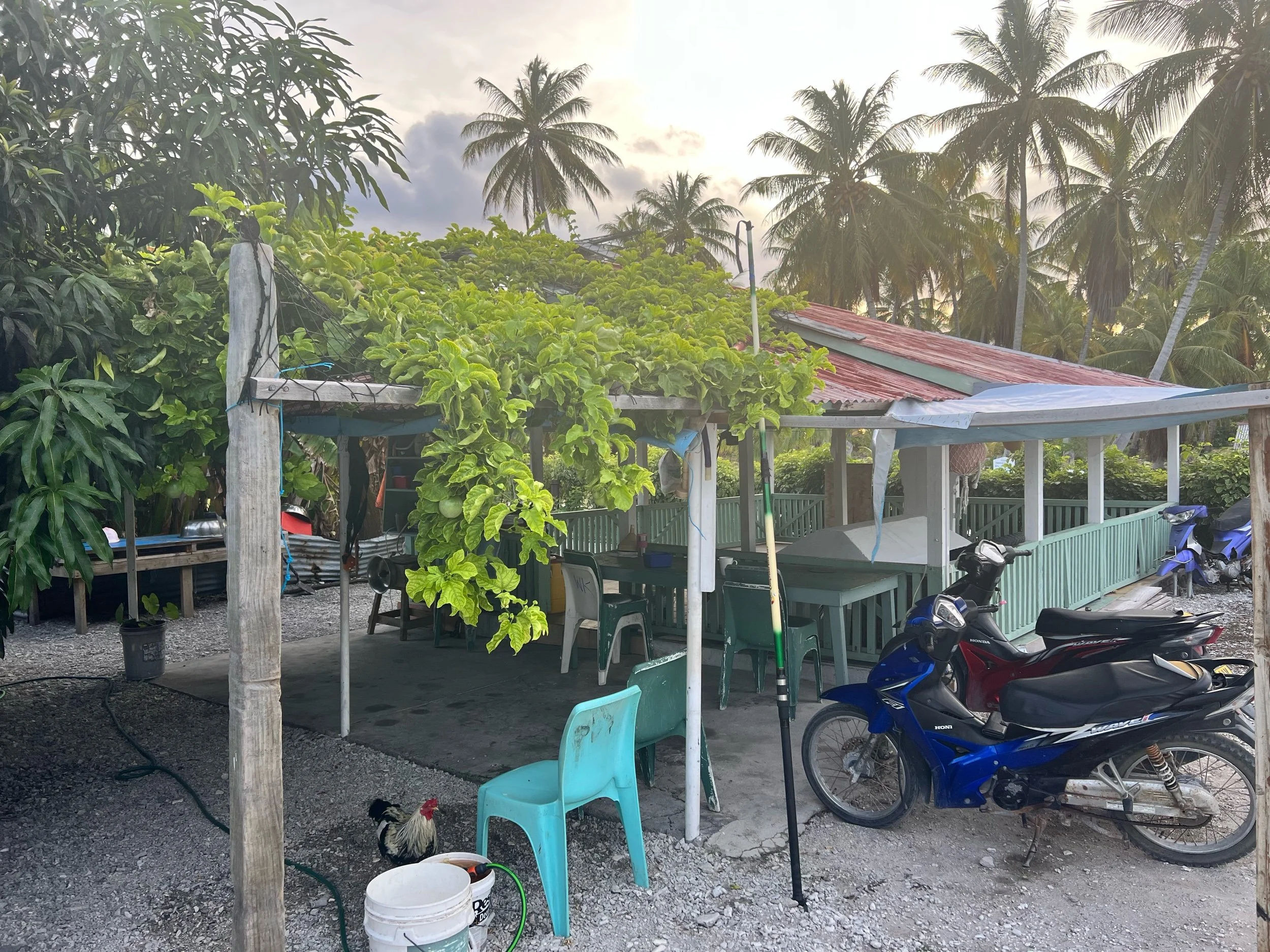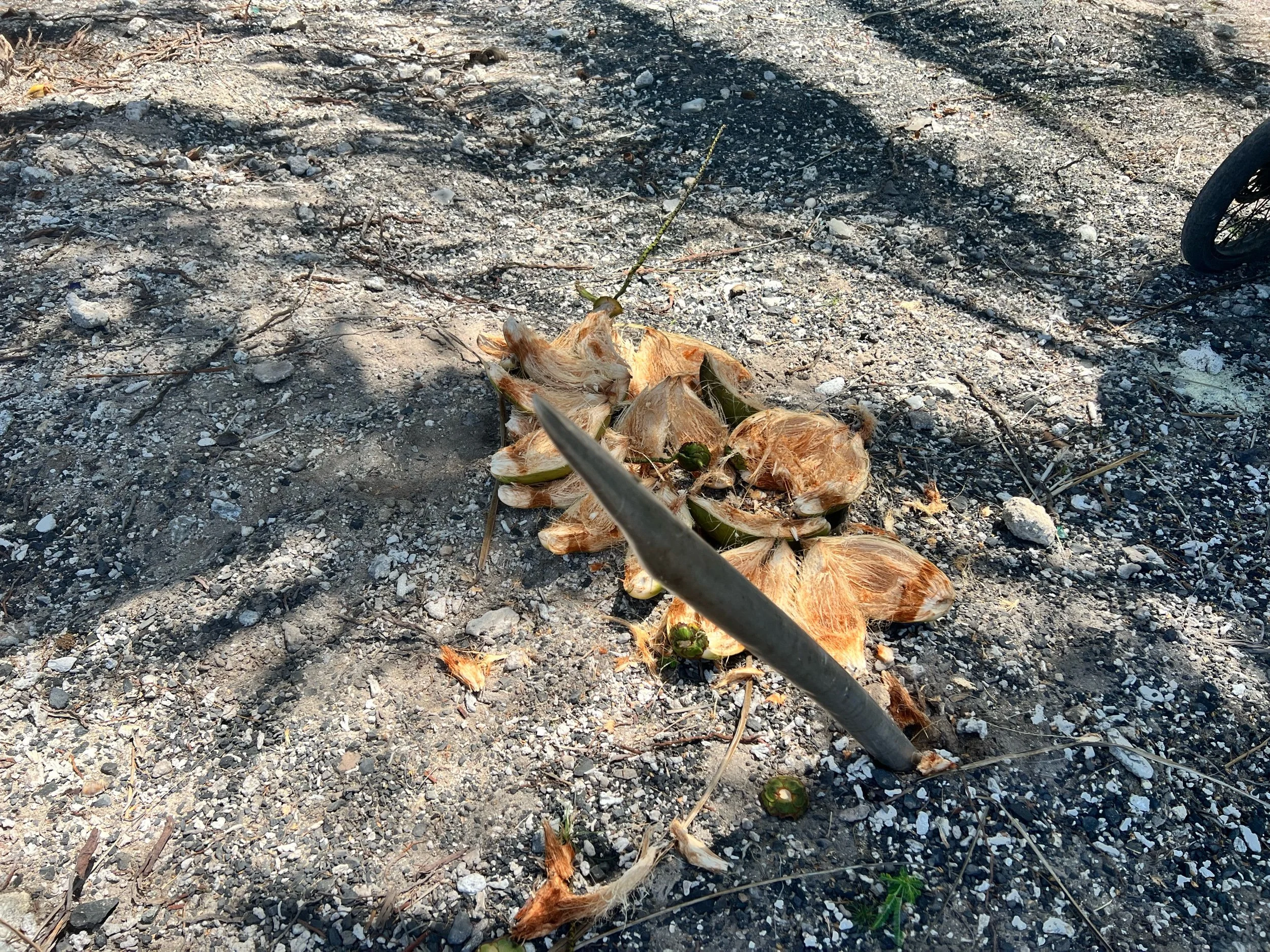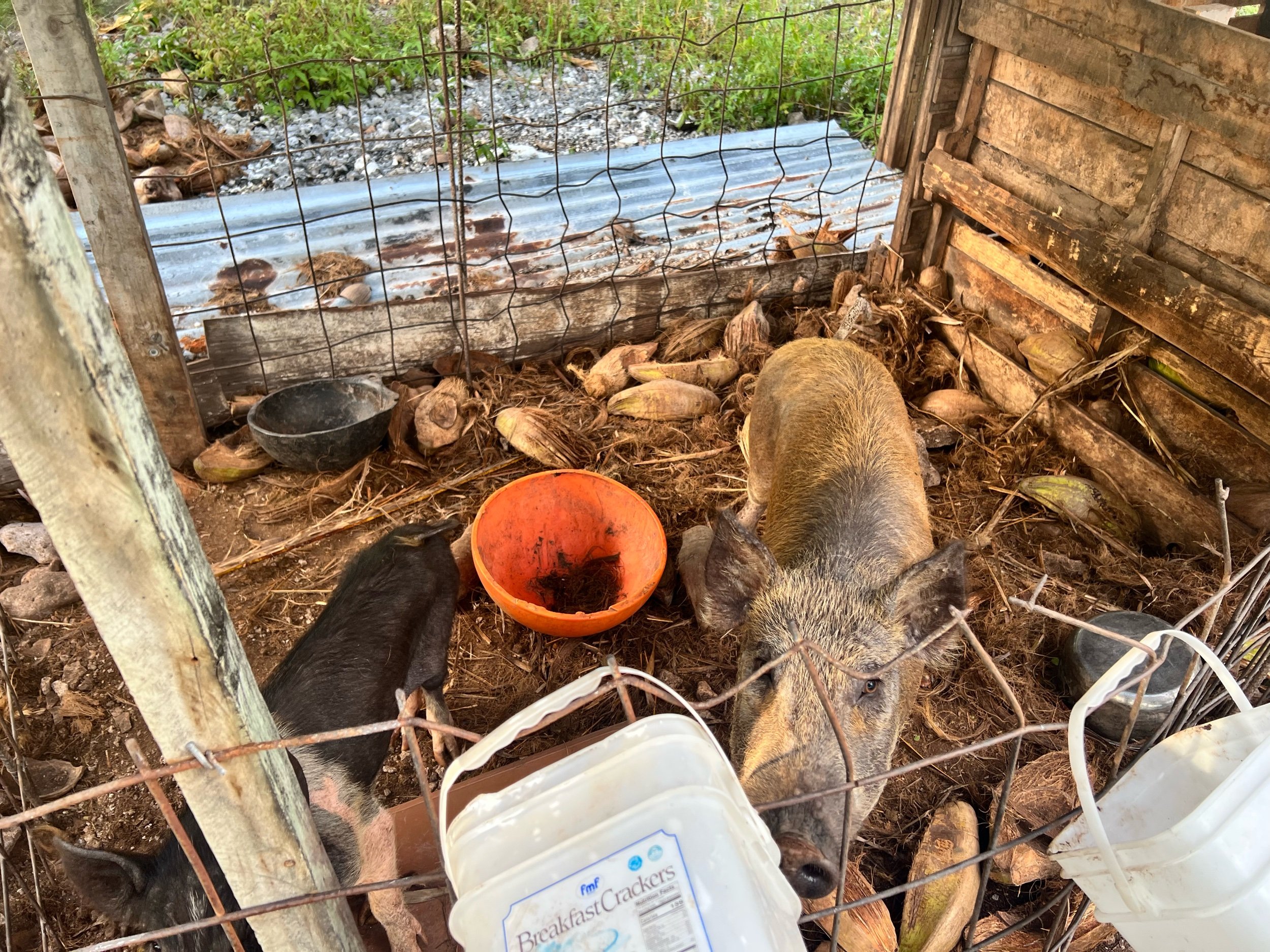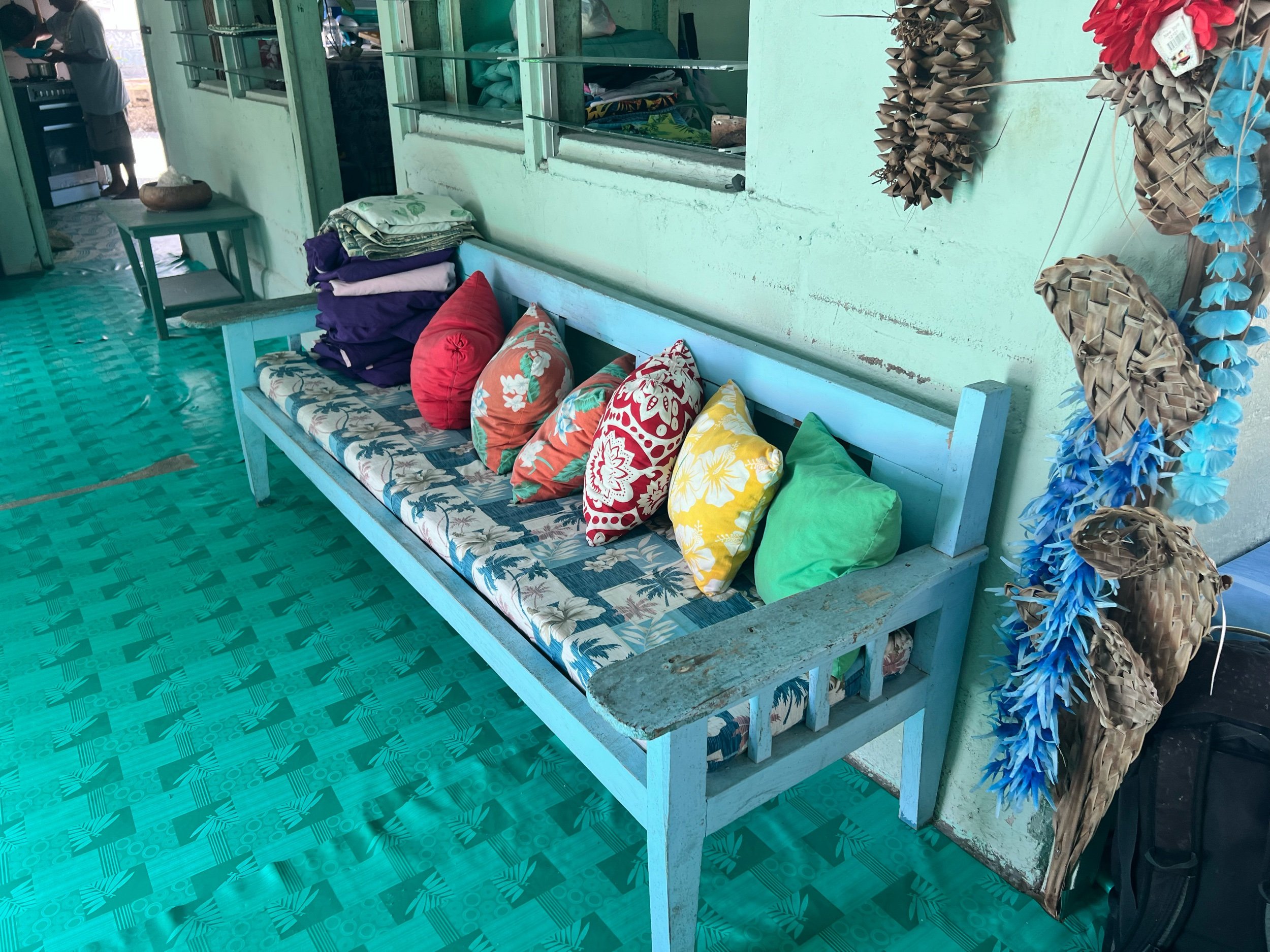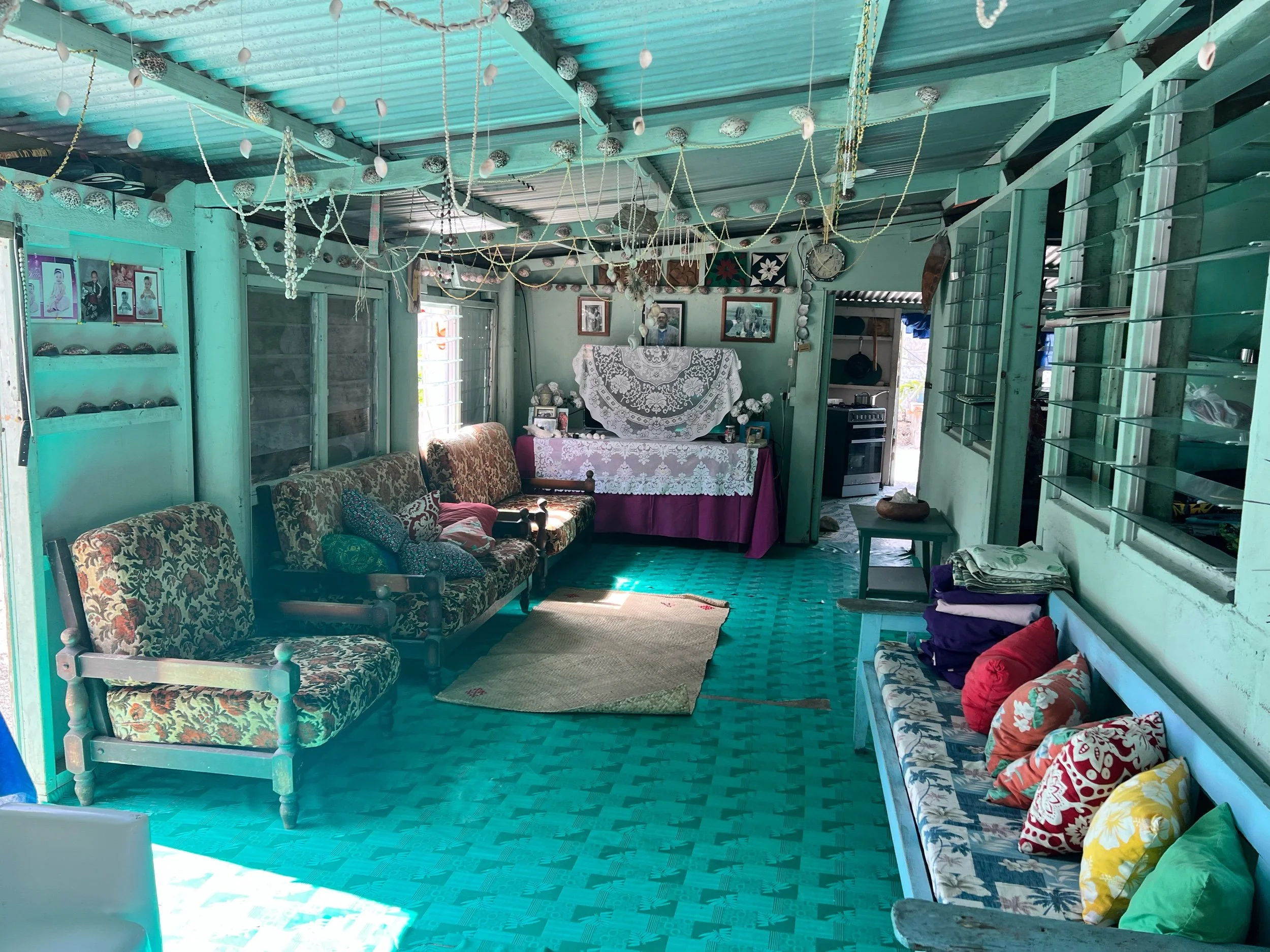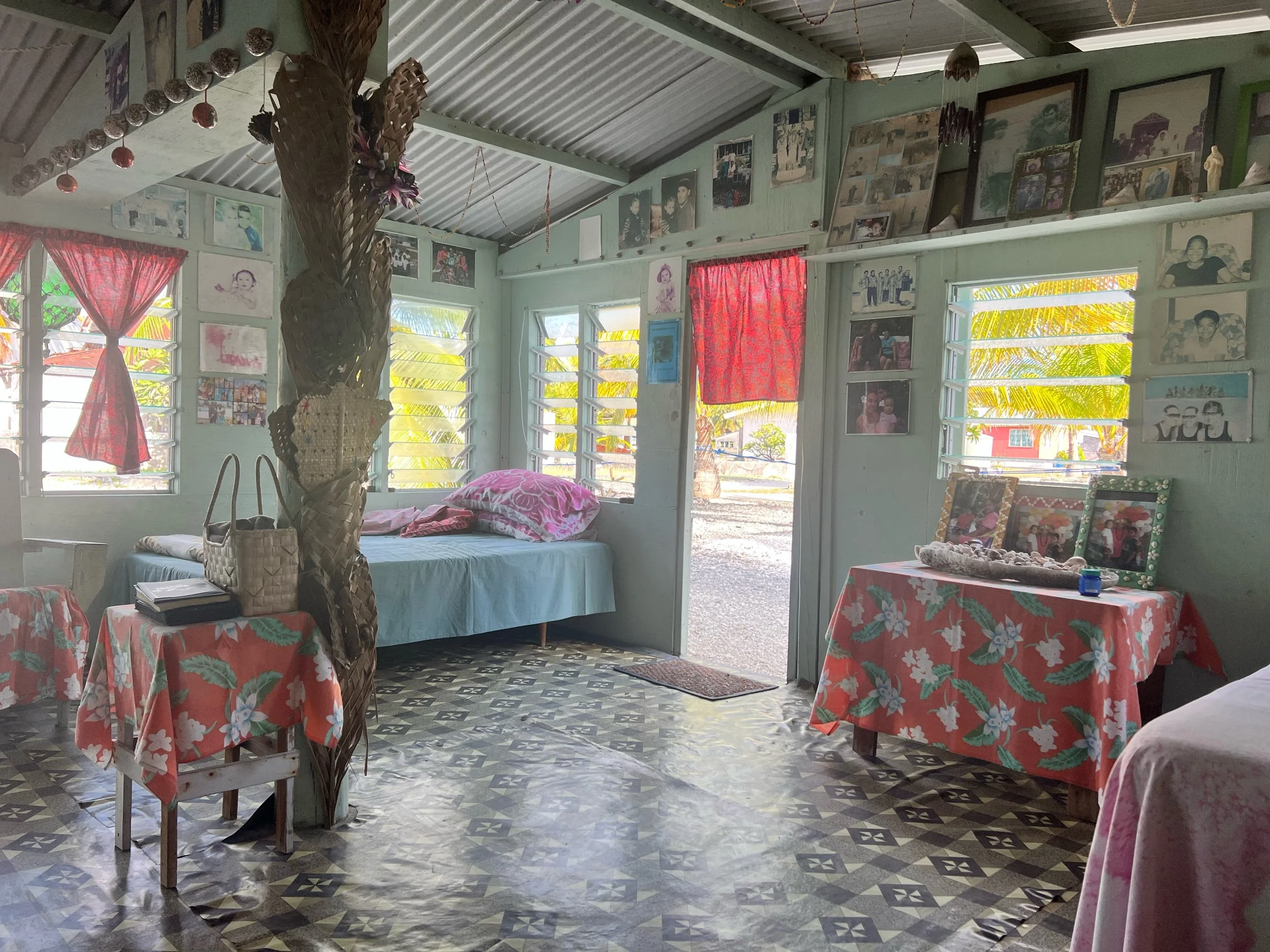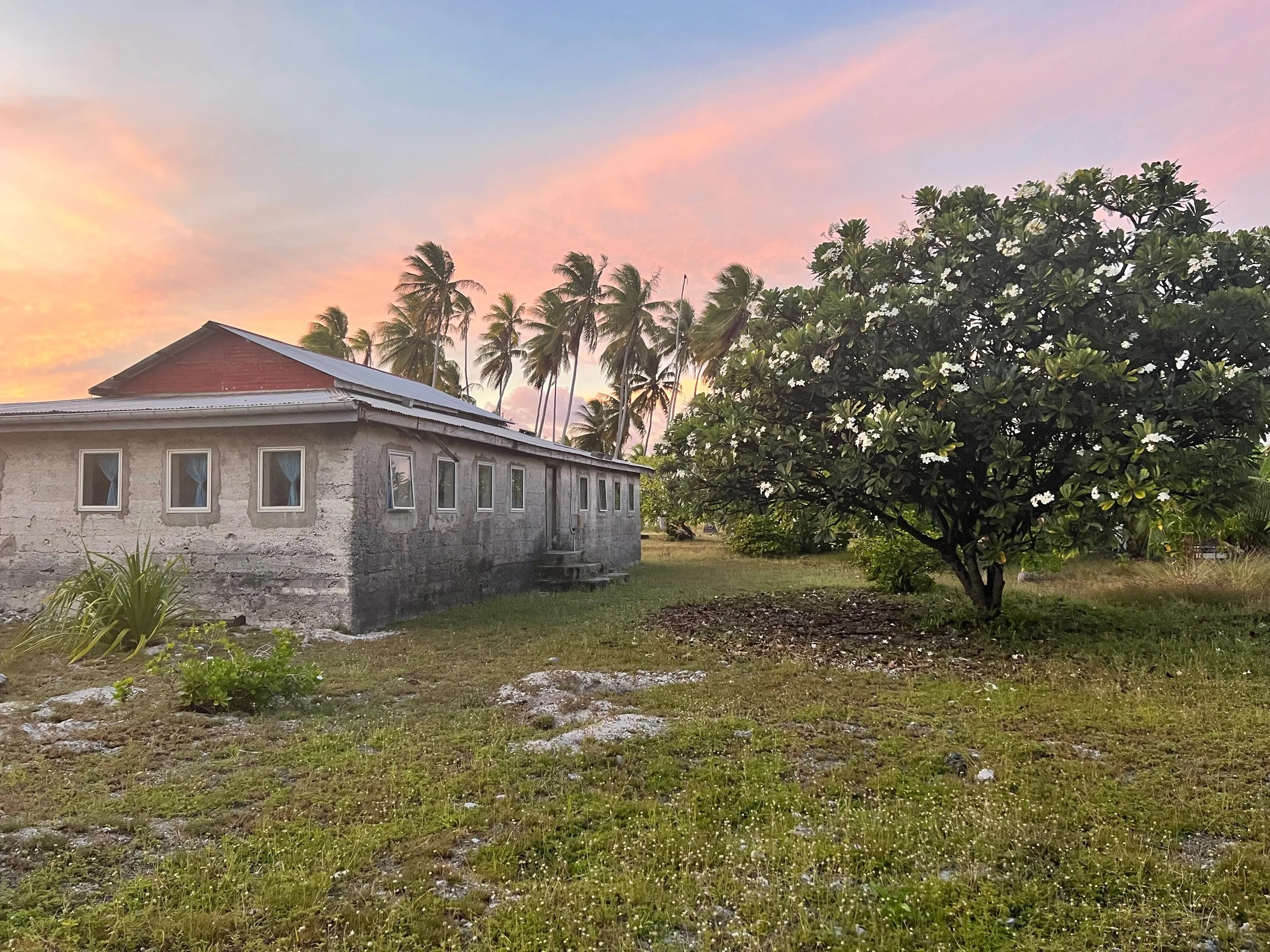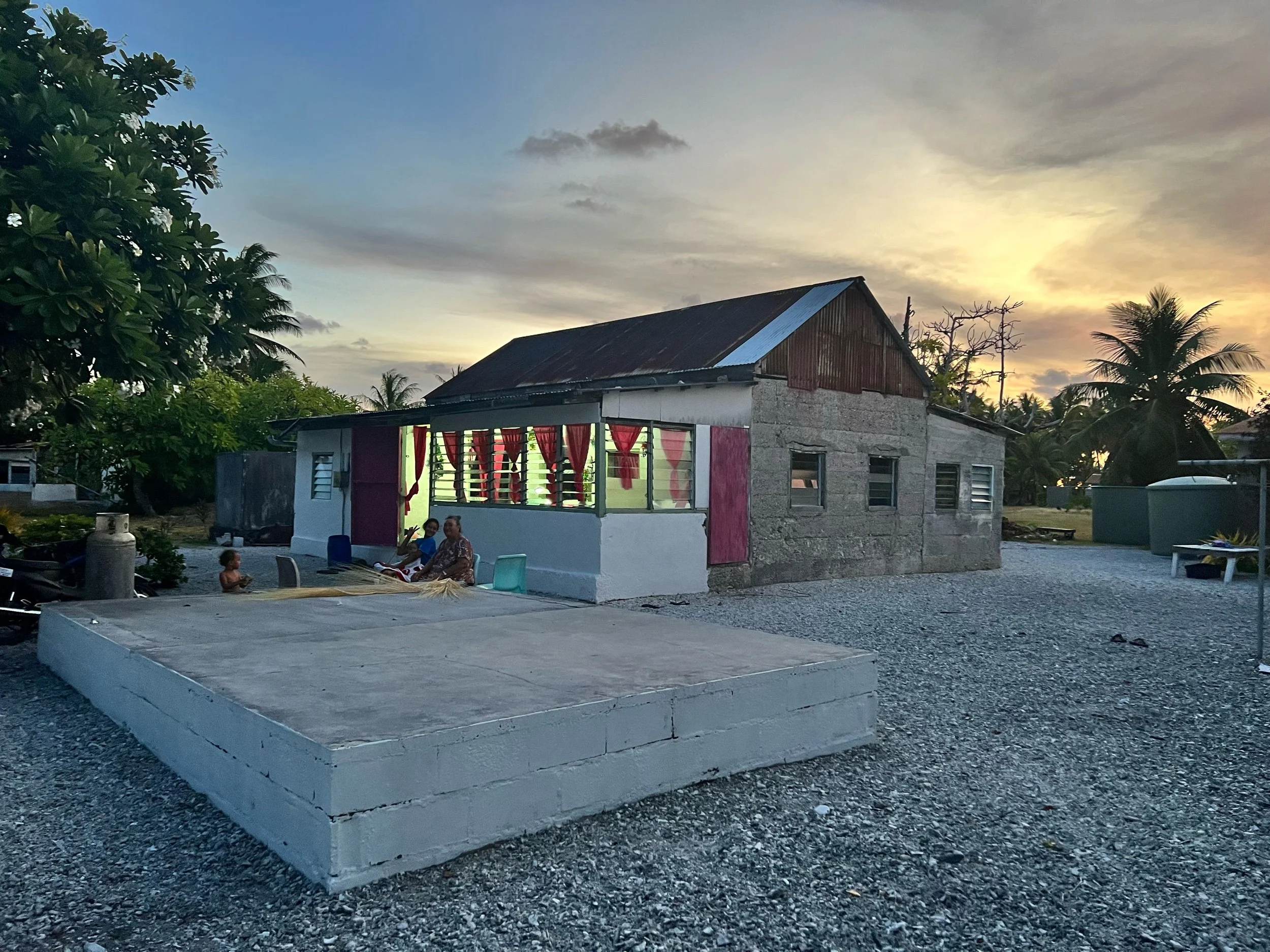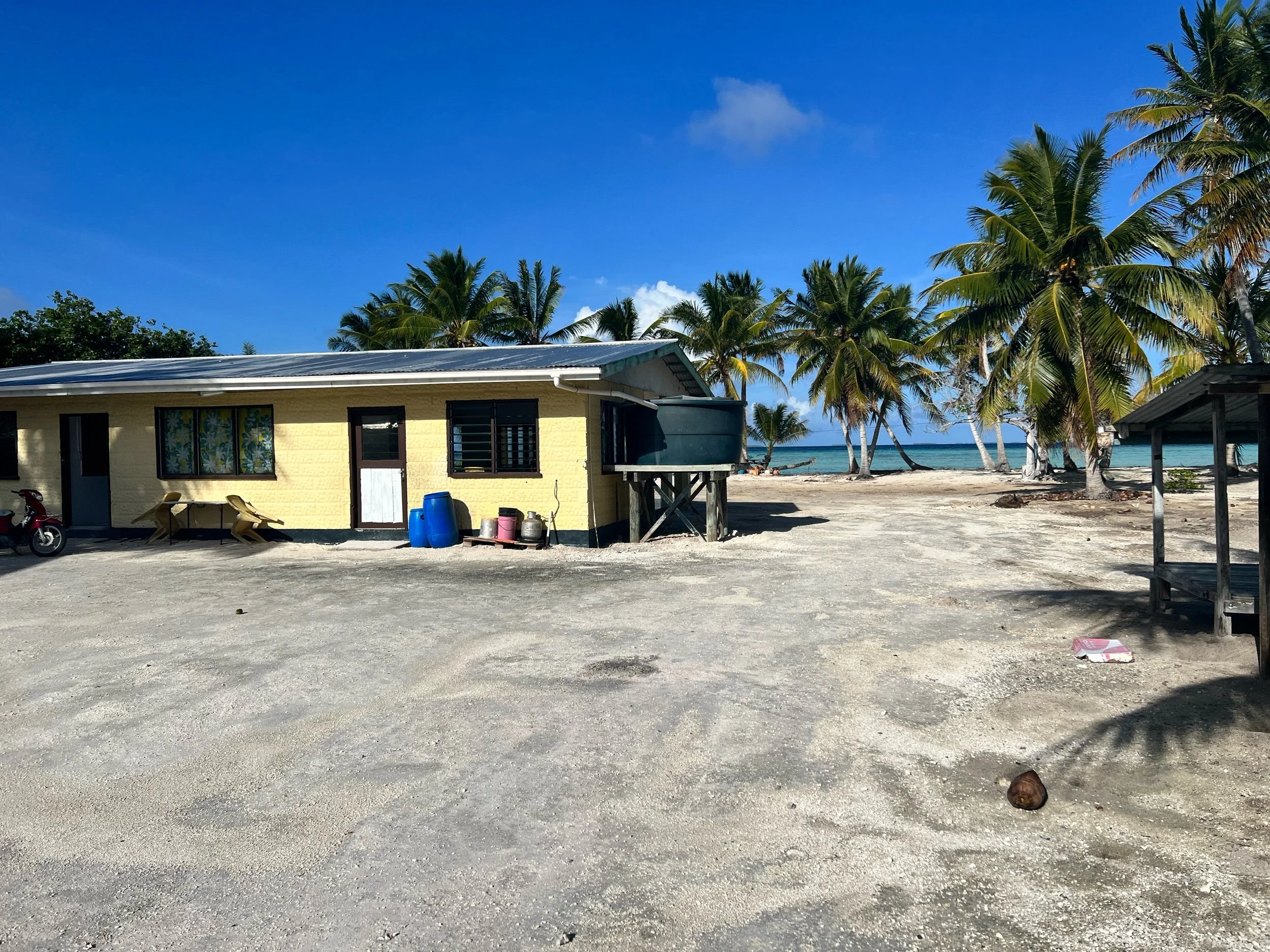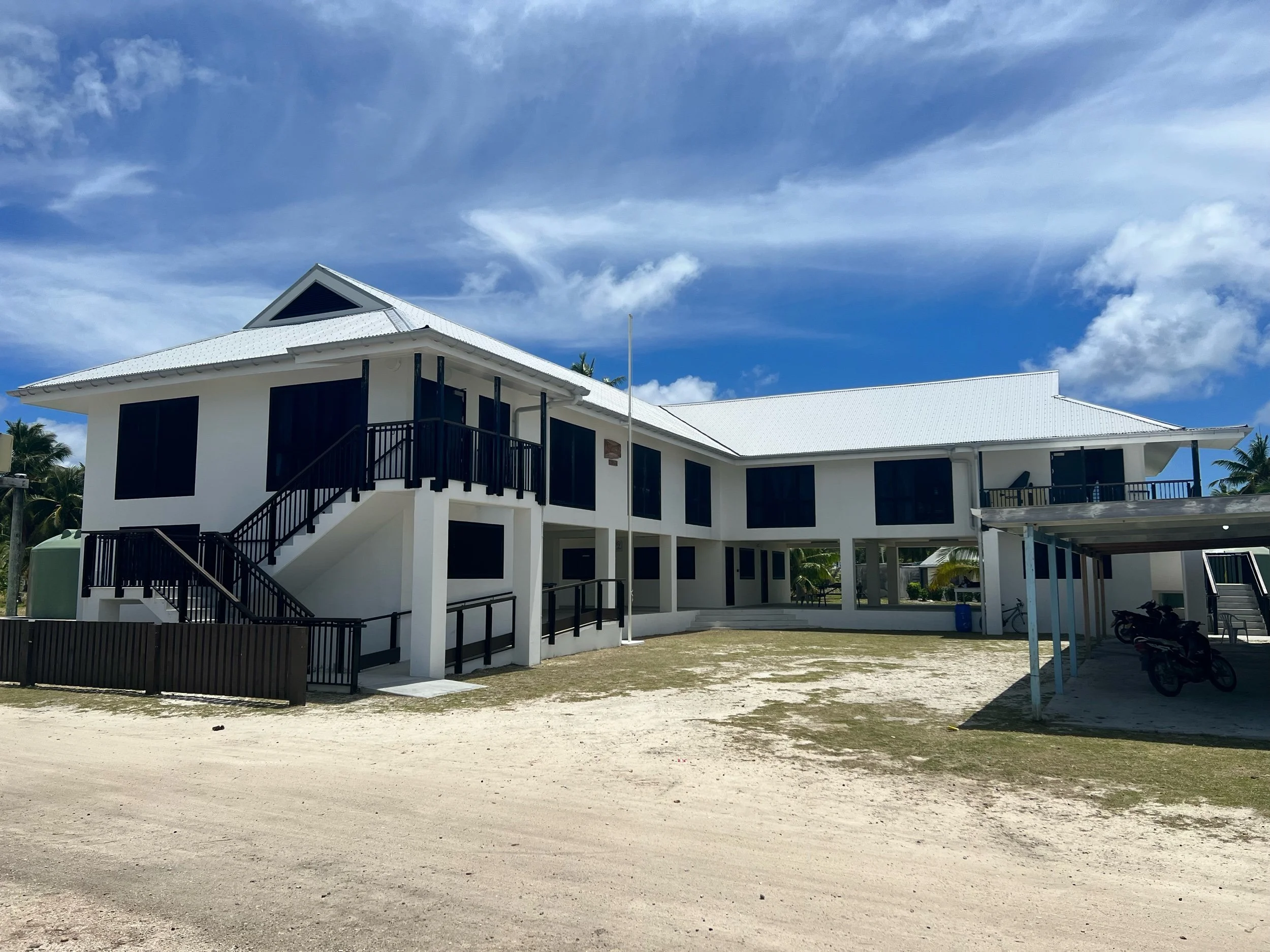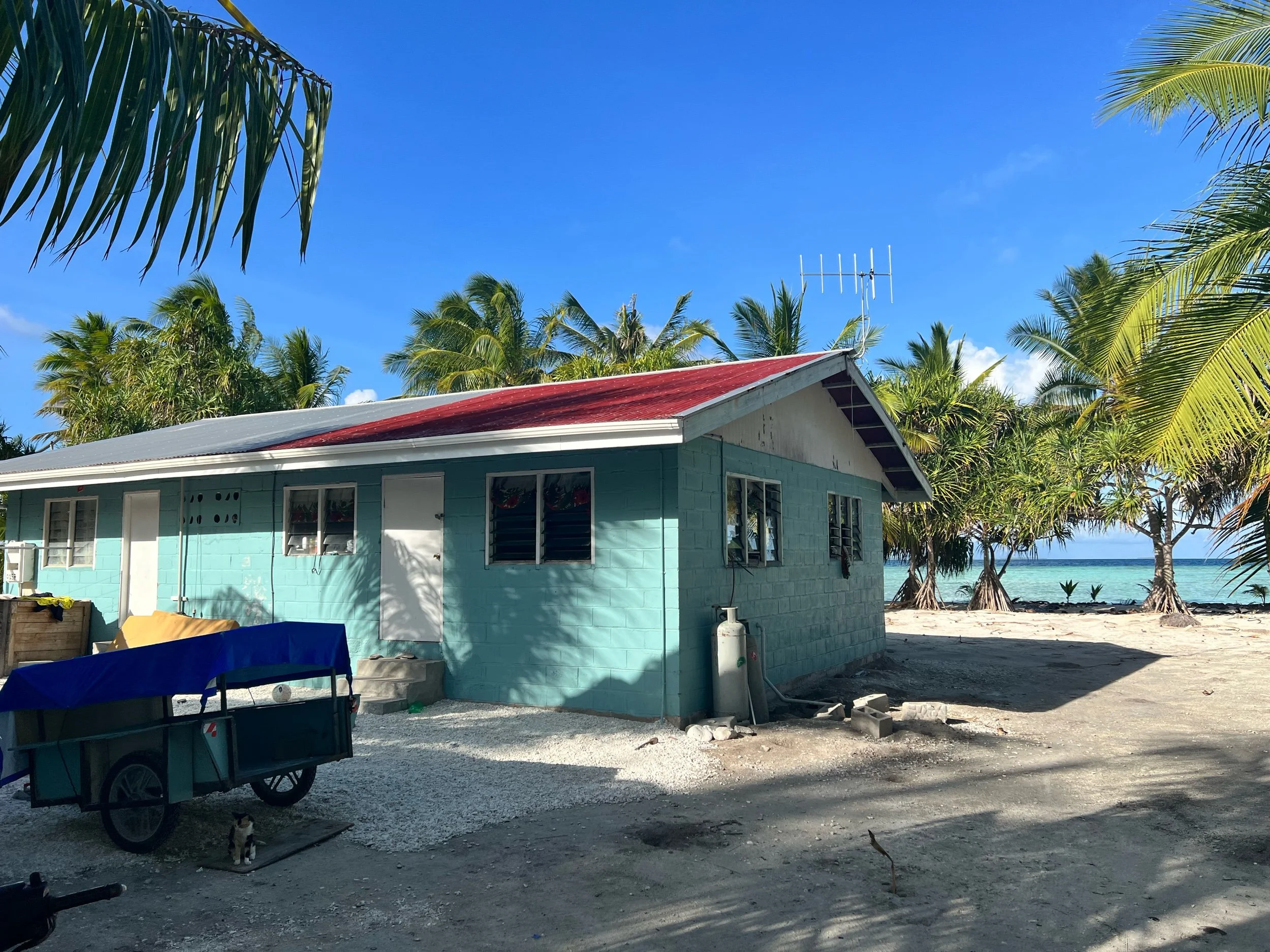Penrhyn Life Part 2 - The Home
Before we venture into anyone else’s home, I had better quell your curiosity regarding my own residence. I have very kindly been accommodated in the brand new ‘Tarakore’ cyclone centre. This building is the largest on the island, save for the Church, and was officially opened less than 12 months ago. It serves as the administration centre for the village of Omoka, as well as being a rather well fitted shelter in the case of a natural disaster. The lower level is mostly open - a handy feature should the lagoon wash right over the island - except for a few offices, tea room, store room and conference room, it’s all very modern and well appointed. Upstairs you will find two large wings, as well as a big kitchen and multiple bathrooms.
This is where the 180 or so inhabitants of Omoka will stay if a cyclone ever approaches; a small but serious risk. I have the whole upstairs to myself, I leave one wing untouched, and the second wing, which faces the lagoon, is home to all my worldly effects; my books, clothes, fishing gear and food. Here there are two beds - constructed from packing case timber for two pilots who were stationed here while surveying the island by plane in the year just passed. The room is all louvres, which lets in a wonderful amount of light and breeze. I am continuously opening and closing the windward louvres as the squalls pass over. At night, when all is quiet except for the strong trades, the wind positively whistles through. Of course, there are an infinite number of combinations in these louvres. From tightly shut to wide open, each row can be finely tuned so as to orchestrate the whole building into producing any desired pitch. It’s all good fun. The Cyclone Centre’s central location means that I really am in the heart of the hustle and bustle of downtown Omoka, sometimes I even have to look left and right before crossing the gravel road, and the mornings when the bank is open, sometimes as many as six bikes can be seen parked in its vicinity. I am also within sniffing distance of any sort of communal eating that takes place, a most helpful feature. It all makes for a rather convivial sort of home.
But that’s more than enough about my home. Let's jump on our bikes, pedal down the road, take a sharp right, weave amongst the coconut palms, and arrive, just in time, at Alex’s and Christine’s place. We’ve ordered a dozen bread rolls and it’s time to pick them up. We’re entering from the back, so we’ll leave our bicycle leaning against a coconut palm and walk across the bleached coral gravel (kirikiri). Alex and Christine live in a typical Penrhyn home; block construction and a tin roof. Inside is a large kitchen cum dining room and multiple bedrooms. The ‘living room’ is on the verandah out the back. This afternoon, as I approach, I see Alex seated comfortably, reading the bible, Christine is weaving earrings, and Alex Jnr, their youngest grandson, is waddling around happily. Christine and Alex raised eleven biological children in this house, as well as another seven ‘feeding children’. You see, in Polynesia, it’s very common for children to be shared around, to be sent to live with uncles, aunties or grandparents. Here I’m often asking the kids who their parents are, trying to piece it all together, a task which is made no easier by this tradition of casual adoption. The job of parenting here is very communal, every child is loved, kissed and fed, regardless of who they live with.
Just about every home here was built by the man who occupies it. There seems to be a rather continuous cycle of new construction as the older homes crumble. In fact, there are currently five new houses under construction in Omoka, not bad for a town with a population of less than 180. Of course, due to the isolation here, it can take a very long time to get the required materials to finish a house, as everything has to be imported. Gone are the days of the thatched roof on Penrhyn, the people here are constantly battling with a lack of water. For this reason all the roofs are corrugated iron and are guttered to collect every drop of rainwater into numerous water tanks. I was told by one Aunty that; “When Penrhyn runs out of water, the whole world will know.” I think she rolled her eyes. I later discovered that it did actually happen, once. A ship carrying water had to travel over 1300 kilometres from the capital, Rarotonga. The story goes that, just as the ship arrived, as the mooring lines were being fastened, the heavens opened up and Penrhyn was soaked with a deluge of rain, instantly negating the need for any assistance.
The homes here would be considered small by western suburban standards, but, as much of the living here is done outside, they are plenty large enough. Many families will set up a table under the frangipani tree in the front yard, lay down some mats, and while away the afternoon hours, sometimes sleeping outside under the stars, as perhaps we all should be.
Walking into a Penrhyn home is always a delight. The louvres are constantly funnelling the cool breeze, and everywhere you look, there’s evidence of creativity and self sufficiency. All the curtains, cushions, bedding and much of the clothing is sewn on the island, the more colour the better! Most of the furniture is handmade as well, and exudes a spartan simplicity that I have come to really appreciate. Nobody, the world over, needs a couch comfier than a Penrhyn one. These lounges are all constructed from packing case timber and offcuts. I think it’s wonderful that just about every Penrhyn man knows how to build a lounge and an adirondack chair, he knows how to enjoy them as well, to properly relax.
The oldest homes on Penrhyn are built from coral and lime, wholly sourced from the lagoon. You can find many, many of these homes crumbling away. There are a few, at least, that are still inhabited and maintained well. One is known simply as ‘The Castle’. Every home here has a shower and flushing toilet, most inside the house, some separate. I believe there are even a few homes with hot water, but I’m yet to experience it. Not long ago every home had its own generator, and the cooking was done on a paraffin stove. Nowadays the island’s power comes from a large bank of solar panels, as well as a central generator, and cooking is done with gas or electricity. Every family has at least one large deep-freezer (always full of fish) and a fridge. The introduction of the freezer must have had a marked difference on the Penrhyn way of life, negating the need to go fishing daily.
An essential part of the Penrhyn home is the ‘ko’ a pointed iron or steel stake that’s used to husk coconuts, this is usually found in the backyard. Complementing the ko is a long pole with a hook at one end, used to pick the green coconuts. You will see pictured a rather clever device for grating the coconuts. Once plugged in, the rasp like drum begins to rotate, half a coconut is then placed against the drum and the meat inside is quickly removed and grated. This meat is then used in all sorts of culinary applications. Most families have at least a few pigs, they are often kept in small lots or are tethered to a tree, some roam free. The pigs are fed scraps and coconuts, and are killed and eaten regularly. Husking the coconuts and feeding the pigs is an essential part of daily life on Penrhyn.
The internet I must mention. Penrhyn has 50 wifi modems, so some homes have internet, others don’t. There is mobile phone reception throughout town, but no mobile data. What a pleasure it is to leave the home and not have access to the internet in one's pocket, although as I understand, it won’t be like this for much longer. This level of connection means that the people here are constantly communicating with their families and friends in Rarotonga, New Zealand, and especially Australia. Did you know that there are at least two Penrhyn rugby teams in Australia?
I am constantly amazed by the number of different activities and jobs that the people here involve themselves in; it seems to be a sure sign of a cohesive and prosperous community. Most men work for the island government, in a range of roles such as waste management, marine resources, health and many more. The women, as well as being homemakers, are continuously crafting ‘rito’ hats. Outside of work hours there is no shortage of things to do; shells are collected, coconuts are husked, pigs are fed, rito is gathered, fish are caught, and on it goes.
You may be wondering what forms the diet of the people here. Well, you would be right in guessing that fish, rice and coconut make up a significant portion of this diet. Being a coral atoll, the land is quite infertile, which means that growing fruit or vegetables is very hard. The coconut is the only tree that flourishes here, the breadfruit (kuru) grows in very small quantities, as does banana, mango tomato and a handful of others. Tinned beef is also a favourite of the islanders, despite its high cost and low quality! Bread and cakes are baked by most of the women on the island. Each family has to order their food from Rarotonga, and wait for it to be delivered by the supply ship that comes every few months. There is a small shop on the island, really just a room in Papa Moana’s house, that sells essentials and a few sweets, at great expense, and there is no guarantee that there will be stock. I once enquired about the opening hours of the Papa’s shop, “Oh when he is awake the shop is open”. Interestingly, the people of Tongareva have a strong liking for Kimchi, fermented Chinese cabbage. The story I am often told is that, not too long ago, before there was any regular shipping, the islanders started trading with Chinese fishing vessels in the area. The ships would come into the lagoon and swap rice and kimchi for different local products, most coveted of which was the testicles of a mature pig. Everyone will tell you that the reason rice is consumed here is due to those enterprising Chinese fishermen.
What strikes one most about Penrhyn living, and a Penrhyn home, is the lack of excess. For sure everyone here could build bigger homes, fill them with more things, then claim to be better off. But thankfully, armed with a certain level of serenity; life here is good and simple. It’s oh so easy to forget that beyond the horizon, on the other side of the Pacific, lies a world of competition, greed, and luxury for luxuries sake. I hear it often, the people of Penrhyn appreciate what they have. “Life is good here, everything is free; the fish, the coconuts and the land.”
We could all learn a thing or two from Penrhyn life.
This is dedicated to Papa Andrew, who sadly passed away as this story was being written. He built and formerly occupied the home pictured at the top of this page, he can be seen sitting under the breadfruit tree. He now rests in the back yard. Rest in peace Papa.

